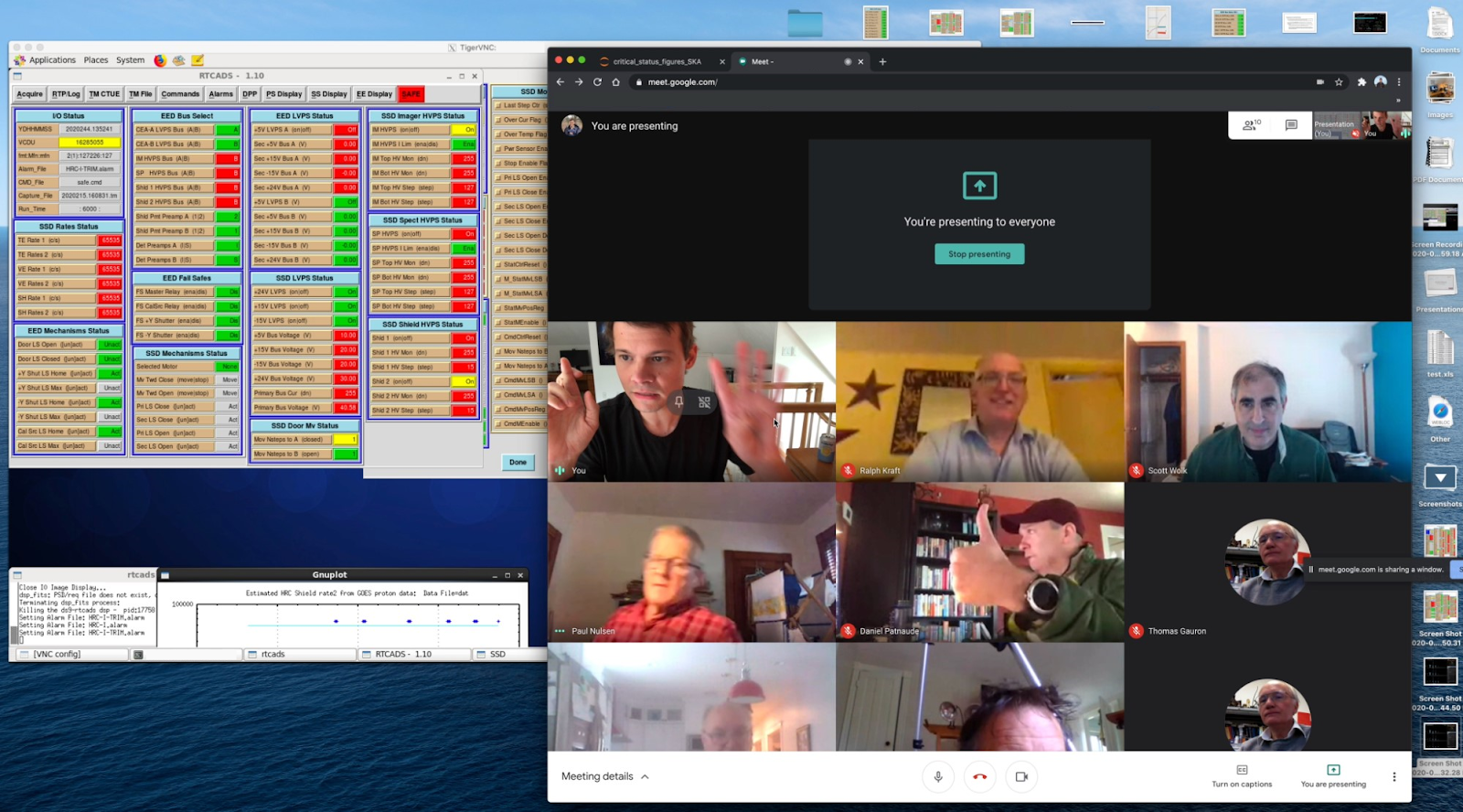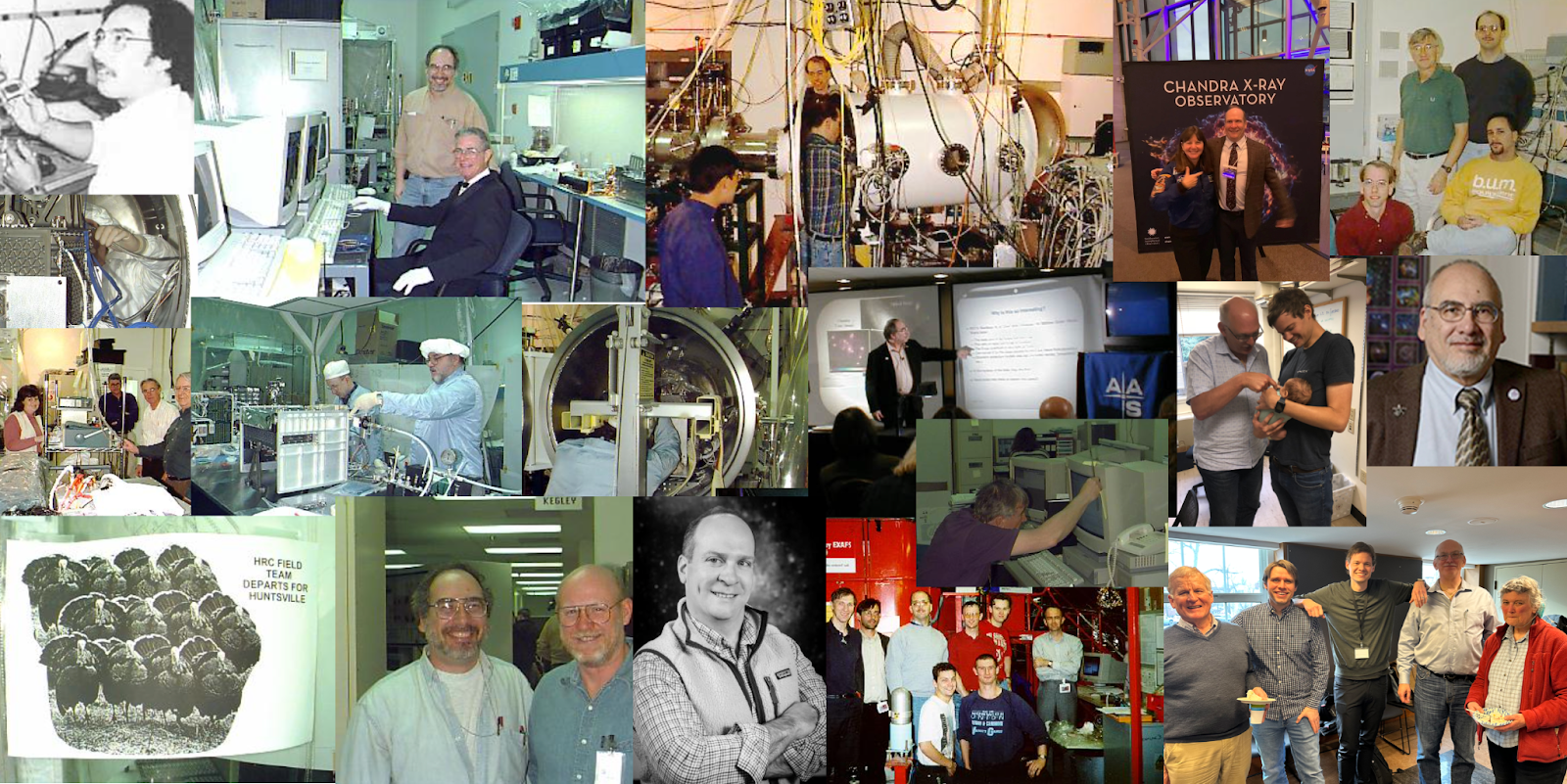HRC Update
Grant Tremblay, Ralph Kraft, Dan Patnaude, Gerrit Schellenberger, Tom Gauron, & Paul Nulsen
Amid looming celebrations for Chandra's 25th launch anniversary, the HRC Team is delighted to report that the instrument is performing nominally in our new operations paradigm and continuing to enable cutting-edge science as the highest resolution X-ray imager in history. Since its return to science with the “A-side” electronics bus on April 10, 2023, the HRC has successfully completed more than 250 observations for a combined total of more than 2.06 megaseconds of exposure time. The A-side anomalies of 2020 (which mirrored the B-side anomaly of 2022) have not returned, all data is of exquisite quality, and the HRC team remains maximally vigilant over all aspects of the instrument. Recall that, following the first A-side anomaly and power reset in August 2020, the voltage collapse reappeared after only 11 hours of operation, leading many to worry that the A-side electronics were permanently unusable for science (hence why we swapped to the B-side, thinking we would never return to the A-side). That we have now successfully used the A-side for more than 570 hours of observation without anomaly recurrence is a testament to the hard work of the entire Chandra Flight and Science Operations Teams and strong evidence in support of our new operations paradigm, which is designed to keep the instrument cool.
We now excitedly await new science results enabled by the HRC's return to work. Indeed, this Cycle, members of the global community are using the HRC's soft-end sensitivity to better understand a “valve-like” black hole feedback effect in a nearby elliptical galaxy, while others are using the HRC timing mode's hyperfine temporal resolution to observe pulsating neutron stars in M28. Meanwhile, a team recently used the HRC's uniquely sharp angular resolution to discover the first evidence of tidally induced activity in a brown dwarf. With community demand for the instrument remaining stable and high, the HRC is ready to continue enabling world-class Chandra science for years to come.
In light of this happy news, and with a sober cognizance of Chandra's uncertain budgetary horizon, we are grateful and reflective of the twenty-five year legacy of this extraordinary instrument—and the people who brought it to life. This reflection is especially poignant given the recent passing of our dear friend, Jerry Austin. Jerry, in his forty years of service to SAO and as a globally recognized leader in the nascent field of X-ray instrumentation, was Lead Systems Engineer on the HRC from Phase B through its assembly, integration, testing, launch, and commissioning remaining so over decades of operations. We hope that you will take time to read the article on Jerry in this issue of the newsletter, as well as this fascinating AIP Oral History interview with Jerry and Steve Murray, the HRC's original Principal Investigator. For a longer but fascinating story of the final, harrowing days of HRC assembly, we highly recommend reading Chapter 21 of Revealing the Universe: The Making of the Chandra X-ray Observatory, by Wallace and Karen Tucker.

Even long into his well-deserved retirement, Jerry remained a fierce intellect and the top expert on every intricacy of the HRC, which he helped build. Jerry even rejoined the HRC team to assist us with planning and execution of our anomaly response. The screenshot above is from August 31, 2020, when the HRC Team (alongside Jerry, bottom left) swapped the instrument to B-side electronics. Our team was connected to the flight comms loop with a skeleton crew in the control room, due to COVID lockdowns. Swapping to B-side electronics required the physical movement of four relay switches that had never been moved in orbit, after twenty-one years of exposure to the space environment. While we had full confidence in the engineering of the spacecraft, this was considered a risky spacecraft intervention. Jerry never doubted that the switches would flip. They did.
Finally, we celebrated a bittersweet moment this Spring when our friend, Dr. Paul Nulsen, retired and moved away to be closer to his family in Australia. Paul was a core member of the HRC team for more than a decade, a mentor to so many at the Center for Astrophysics, and a brilliant scientist who has greatly advanced our understanding of galaxy evolution. Paul retains the ability to consult with SAO should any HRC issues arise in the future, so we have not lost Paul's immense knowledge of the instrument for good. Meanwhile, the HRC team is delighted to have welcomed Dr. Gerrit Schellenberger to our group. Even with just a few months on the job, Gerrit has made incredible contributions to the team, including a robust new suite of instrument monitoring codes. The team is as strong as ever, and we're all actively planning to visit Australia as soon as possible to enjoy laughs and memories with Paul.

This Spring, we wished a happy retirement to our beloved friend and HRC Team member, Dr. Paul Nulsen (along with Dr. Susan Nulsen, who was a dear member of our team in spirit). While this was immensely bittersweet, we're still in frequent contact with Paul and Susan and planning visits to Australia soon. We're also delighted to welcome Dr. Gerrit Schellenberger to our group, who has been hard at work making our operations more robust and vigilant.
And so we close in the spirit of gratitude, reflection, and optimism for a continued bright future for Chandra and the HRC. Our community is proof that observatories and space telescopes are not just collections of metal and glass and silicon, or bytes of data on a hard disk. They are human endeavors, from dream to flight to discovery. We wish the global Chandra community a happy 25th launch anniversary, and close with hopes that its greatest discoveries lie ahead.
